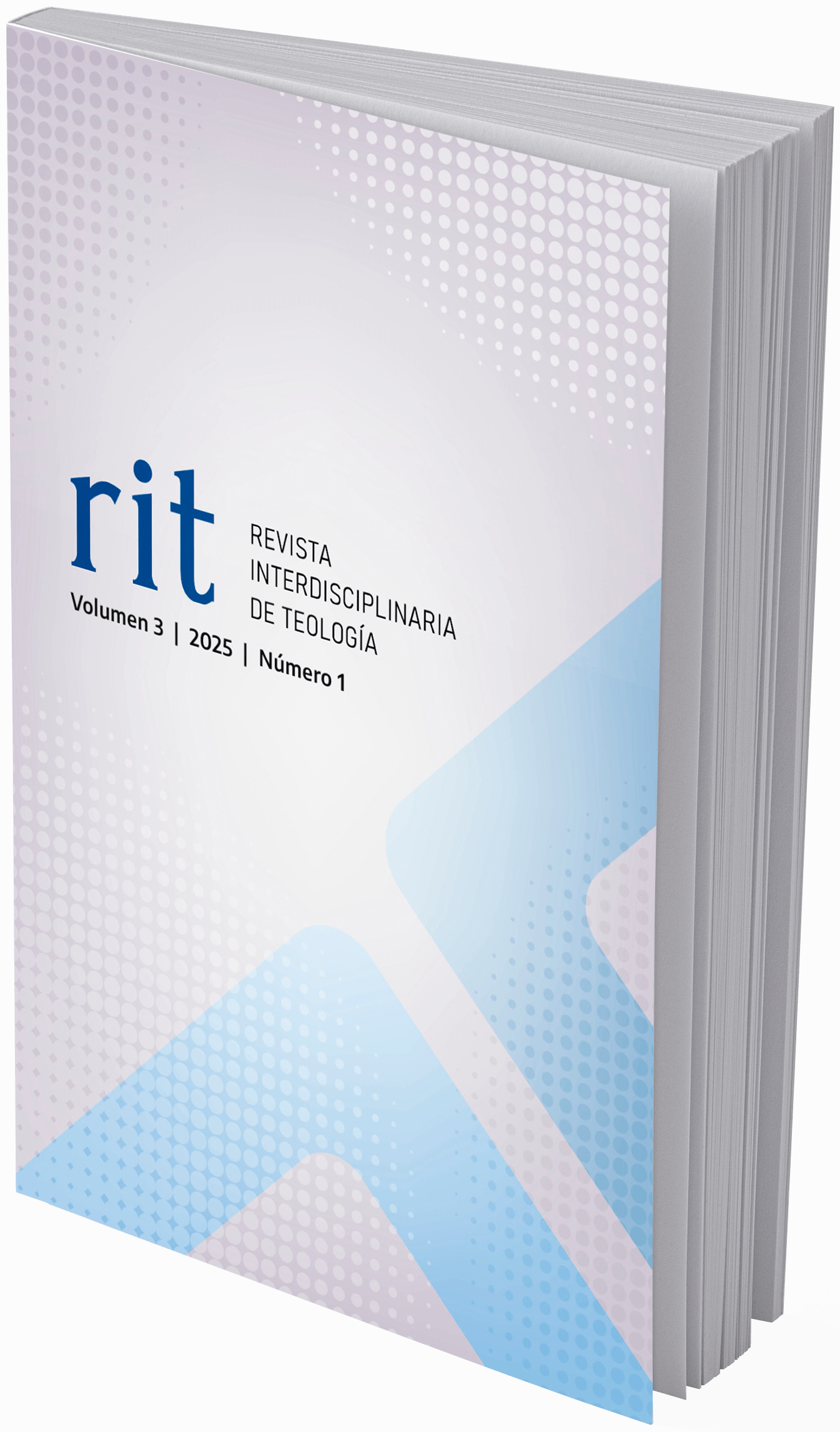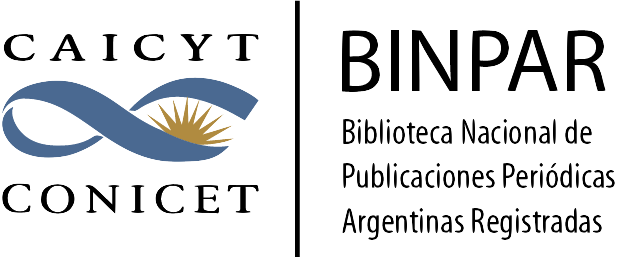Did Huldah live in the second quarter or in the house of instruction?
A brief philological and narrative analysis of 2 Kings 22:14 and 2 Chronicles 34:22
Keywords:
Prophetism, women prophets, Deuteronomistic history, women in the Old Testament, Jerusalem, King JosiahAbstract
The story of the prophetess Huldah is recounted in both 2 Kings 22 and 2 Chronicles 34. In both cases her description is very similar, and it is stated that she lived, literally, “in Jerusalem, in the second” (בִּירוּשָׁלִַם בַּמִּשְׁנֶה). The interpretation of the term מִּשְׁנֶה has been the subject of debate as it can be understood as the designation of a quarter in Jerusalem or a center of religious instruction. In the latter case, Huldah would not only be a prophetess, but also a religious teacher. This article will conduct a philological and narrative study of the word in question to inquire on Huldah place of residence and its implications for her religious function.
References
Aberbach, M. (1966). “Educational institutions and problems during the talmudic age”. Hebrew Union College Annual 37, 107-120.
Ackroyd, P. R. (1973). 1 and 2 Chronicles, Ezra, Nehemiah. London: SCM Press.
Adonis, M. (2002). “The Theological Significance of the Prophet Hulda’s Prophecy: A Feminist Perspective on 2 Kings 22:14-20”. Tesis de maestría, University of Stellenbosch.
Allen, L. C. (1974). The Greek Chronicles, the Relation of the Septuagint of I and II Chronicles to the Massoretic Text, part 1 The Translator’s Craft. Leiden: Brill.
Alonso Schökel, L. (1989). Diccionario bíblico hebreo-español. Madrid: Trotta.
Balzaretti, C. (2013). Cronache: Introduzione, traduzione e commento. Milán: San Paolo.
Berger, Y. (2007). The Commentary of Rabbi David Kimhi to Chronicles, A Translation with Introduction. Providence, RI: Brown Judaic Studies.
Berlin, A. (1994). Zephaniah: A new translation with introduction and commentary, The Anchor Bible 25ª. New York: Doubleday.
Biesenthal, J. H. R. y F. Lebrecht (1847). Rabbi Davidis Kimchi radicum liber sive hebraeum bibliorum lexicon. Berlín: Bethge.
Clines, D. J. A., ed. (2011). The Dictionary of Classical Hebrew, vol. 5. Sheffield: Sheffield Phoenix Press.
Cogan, M. y Tadmor, H. (1988). 2 Kings: A new translation with introduction and commentary, The Anchor Bible 11. New York: Doubleday.
del Valle, C. (2011). La Misná, Biblioteca de Estudios Bíblicos 98. Salamanca. Sígueme.
Fensham, F. C. (1982). The Books of Ezra and Nehemiah. Grand Rapids, MI: Eerdmans.
Fernández Marcos, N. y Busto Saiz, J. R. (1992). 1-2 Reyes, El texto antioqueno de la Biblia Griega 2. Madrid. CSIC.
Fernández Marcos, N. y Busto Saiz, J. R., eds. (1996). 1-2 Crónicas, El texto antioqueno de la Biblia Griega 3. Madrid: CSIC.
Gafney, W. C. (2017). Nahum, Habakkuk, Zephaniah, Wisdom Commentary 38. Collegeville, MN: Liturgical Press.
Gordon, R. P. y Dirksen, P. B. (2019). The Syriac Peshitta Bible with English Translation: Chronicles. Piscataway, NJ: Gorgias Press.
Gray, J. (1963). 1 and 2 Kings: A Commentary. Philadelphia, PA. Westminster Press.
Gunneweg, A. H. J. (1987). Nehemia. Gütersloh: Mohn.
Habel, N. C. (2015). “Reading the Landscape in Biblical Narrative”. En Nolan Fewell, Danna (Ed.), The Oxford Handbook of Biblical Narrative (pp. 481-488). Oxford: Oxford University Press.
Hanhart, R., ed. (2014). Paralopomenon liber II, Septuaginta Vetus Testamentum Graecum 7.2. Göttingen: Vandenhoeck & Ruprecht.
Hertzberg, H. W. (2003). I Libri di Samuele. Brescia: Paideia.
Hobbs, T. R. (1985). 2 Kings, Word Biblical Commentary 13. Waco, TX: Word Books.
Ilan, T. (2010). “Huldah, the Deuteronomic Prophetess of the Book of Kings”, Lectio difficilior 1, 1-16.
Johnstone, W. (1997). 1&2 Chronicles. Sheffield: Sheffield Academic Press.
Jones, G. H. (1984). 1 and 2 Kings, vol. 2. Grand Rapids, MI: Eerdmans.
Kalma, J. (1980). Neviʼim rishonim ṿa-ʻalehem Targum Yonatan, perushe Rashi, Radaḳ, Ralbag, ṿe-R. Yeshaʻyah mi-Ṭrani, Metsudat Daṿid, Metsudat Tsion, u-viʼur ha-Gra, ṿe-ʻod nilṿu alehem Toledot Aharon, Masorah gedolah, Masorah ḳeṭanah, u-Minḥat shai ʻim Mevo ha-Masorah, vol 6. Jerusalén: Tefutzah Center for Sacred Books
Keil, C. F. y Delitzsch, F. (1986). Commentary on the Old Testament in Ten Volumes, vol. 3: 1 & 2 Kings, 1 & 2 Chronicles, Ezra, Nehemiah, Esther. Grand Rapids, MI: Eerdmans.
Kiraz, G. A., et al. (2018). The Syriac Peshiṭta Bible with English Translation: Kings. Piscataway, NJ: Gorgias Press.
Kittel, R. et al. (1997). Biblia Hebraica Stuttgartensia. Stuttgart: Deutsche Biblegesellschaft.
Klein, E. (1987). A Comprehensive Etymological Dictionary of the Hebrew Language for Readers of English. Jerusalem: Carta.
Klein, R. W. (2012). 2 Chronicles, Hermeneia: A Critical and Historical Commentary on the Bible. Minneapolis, MN: Fortress Press.
Klein, R. W. (2006). 1 Chronicles, Hermeneia, A Critical and Historical Commentary on the Bible. Minneapolis, MN: Fortress Press.
Kodel, J. (2014). Joseph Seniri: Commentary on the Former Prophets, A Critical Edition of the Hebrew Text with Introductory Essays on Grammatical Exegesis in Thirteenth-Century Provence. Leiden: Brill.
Koehler, L. y Baumgartner, W. (1995). The Hebrew and Aramaic Lexicon of the Old Testament, vol. 2. Leiden: Brill.
Kronholm, T. (2006) “שנה change; repeat”. En Ed. G. J. Botterweck, H. Ringgren y H.-F. Fabry (Eds.), Theological Dictionary of the Old Testament (Vol. 15, pp. 317-322). Grand Rapids, MI. Eerdmans.
Lamsa, G. (1957). The Holy Bible from ancient Eastern manuscripts. Containing the Old and New Testaments. Philadelphia, PA: Holman.
Lamsa, G. (1978). Old Testament Light: A Scriptural Commentary based on the Aramaic of the ancient Peshitta Text. Philadelphia, PA. Holman.
Leibush, M., ed. (1874). Prophets and Writings with Malbim, vol. 3. Warsaw: Leibush.
Long, J. C. (2002). 1 and 2 Kings. Joplin, MO: College Press.
Mare, W. H. (1987). The archaeology of the Jerusalem area. Grand Rapids, MI: Baker Book.
Myers, J. M. (1965). 2 Chronicles: A new translation with introduction and commentary, The Anchor Bible 13. New York: Doubleday.
Phipps, W. E. (1992). Assertive Biblical Women. Westport, CT: Greenwood Press.
Provan, I. W. (1995). 1 and 2 Kings. Peabody, MA: Hendrickson.
Rahlfs, A. ed. (1979). Septuaginta, Id est Vetus Testamentum graece iuxta LXX interpretes. Stuttgart: Deutsche Bibelgesellschaft.
Rahlfs, A., ed. (1943). Duodecim Prophetae, Septuaginta Vetus Testamentum Graecum 13. Göttingen: Vandenhoeck and Ruprecht.
Richter, E. E. y Maurin, A. (2021). “Las escuelas de los profetas del antiguo Israel y su impacto en la educación adventista”. Apuntes Universitarios 11.4, 168-182.
Robinson, J. (1976). The Second Book of Kings. Cambridge: Cambridge University Press.
Robinson, J. (1976). The Second Book of Kings. Cambridge: Cambridge University Press.
Römer, T. (2014). “From Prophet to Scribe: The Jeremiah, Huldah and the Invention of the Book”. En Davies, P. R. y Römer, T. (Eds.), Writing the Bible: Scribes, Scribalism and Script (86-96). Stockfield: Acumen Publishing.
Rothkoff, A. (2007). “Hulda”. En F. Skolnik (Ed.), Encyclopaedia Judaica (Vol. 9, pp. 580-581). Framington Hills, MI: Thomson Gale.
Selman, M. J. (1994). 2 Chronicles: An Introduction and Commentary. Downers Grove, IL: Inter-Varsity Press.
Simons, J. (1952). Jerusalem in the Old Testament: Researches and Theories. Leiden: Brill.
Smith, R. P., (1879). Thesaurus Syriacus, vol. 1. Oxford: Clarendon Press.
Sperber, A., ed. (1959). The Bible in Aramaic, vol. 2: The Former Prophets according the Targum Jonathan. Leiden: Brill.
Stravrakopoulou, F. (2018). “The Prophet Huldah and the Stuff of State”. En Rollston, C. A. (Ed.), Enemies and Friends of the State: Ancient Prophecy in Context (pp. 277-298). University Park, PA: Eisenbrauns.
Sweeney, M. A. (2003). Zephaniah: a commentary, Hermeneia, A Critical and Historical Commentary on the Bible. Minneapolis, MN: Fortress Press.
Tolmie, D. F. (1999). Narratology and Biblical Narratives: A Practical Guide. San Francisco, CA. International Scholars Publications.
van Staalduine-Sulman, E. (2002). The Targum of Samuel, Studies in the Aramaic Interpretation of Scripture 1. Leiden: Brill.
Weems, R. J. (2003). “Hulda, the Prophet: Reading a (Deuteronomistic) Woman’s Identity”. En Strawn, B. A. y Bowen, N. R. (Eds.), A God So Near: Essays on Old Testament Theology in Honor of Patrick D. Miller (321-339). Winona Lake, IN: Eisenbrauns.
Weitzman, M. P. (1999). The Syriac version of the Old Testament: An Introduction. New York. Cambridge University Press.
Williamson, H. G. M. (1985). Ezra, Nehemiah, Word Biblical Commentary 16. Waco, TX: Words Books.
Wray Beal, L. M. (2014). 1 & 2 Kings, Apollos Old Testament Commentary 9. Downers Grove, IL: InterVarsity Press.
Downloads
Published
How to Cite
Issue
Section
License
Copyright (c) 2025 Eric Richter

This work is licensed under a Creative Commons Attribution-NonCommercial-ShareAlike 4.0 International License.















